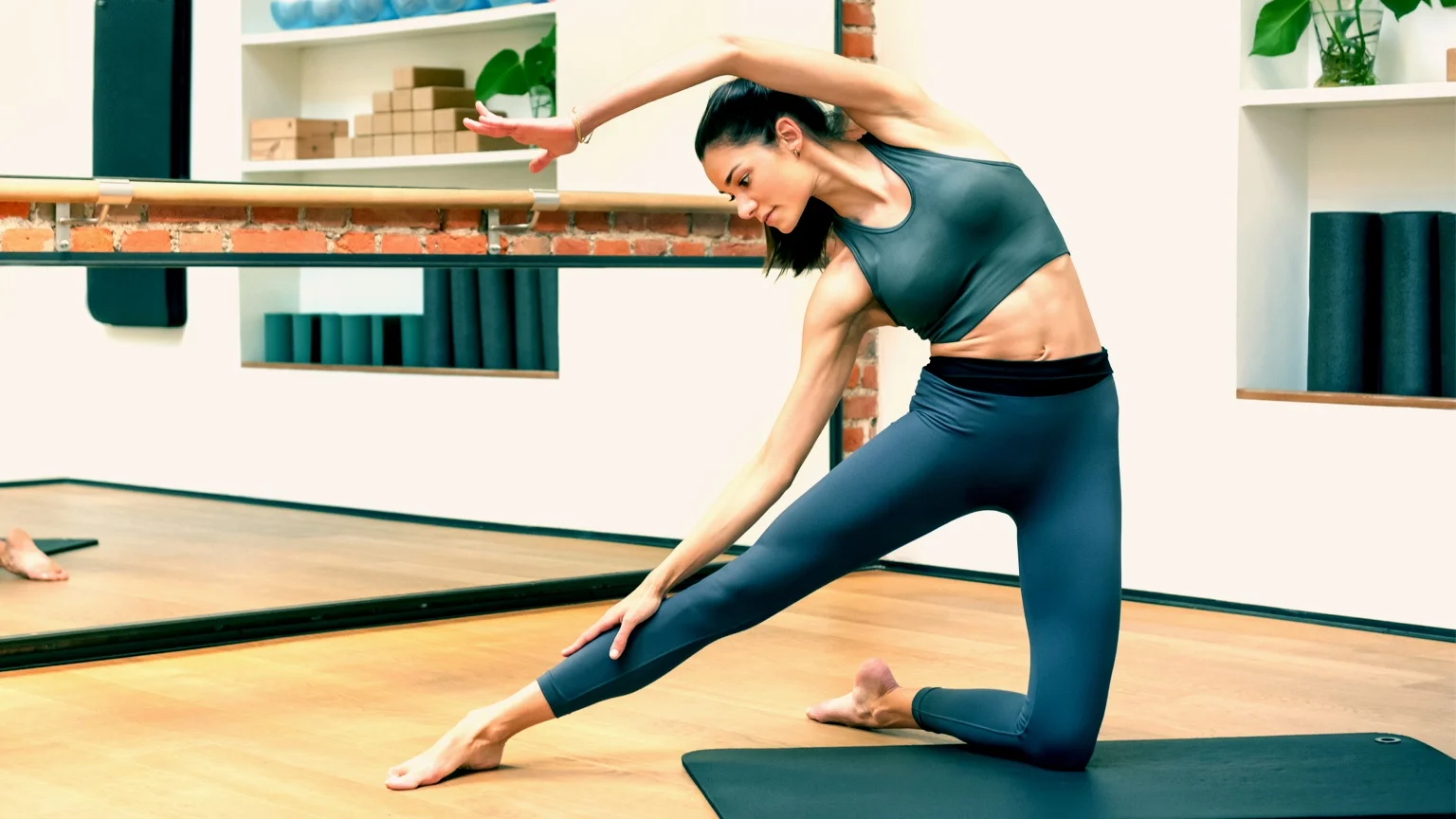Gate Pose (Parighasana)

The Gate Pose, also known as Parighasana, is a kneeling, side-bend yoga pose. In this pose, you begin by kneeling down, with one leg extended out to the side. You then bend your torso towards your extended leg, holding onto your shin with one arm and extending your other arm above your head.
- Position: Kneeling.
- Stretched body parts: The Gate Pose stretches the sides of your torso, obliques, hamstrings (of your extended leg), thighs and shoulders. It also engages your core and buttocks to provide stability and balance.
- Benefits: This pose stretches a large number of muscle groups. It also improves circulation and increases the mobility of your hip and shoulder joints. Because of the bend position, it can also stimulate your abdominal organs, helping with digestion.
- Symbolism: The pose resembles the position of an iron bar locking a gate.
- Similar poses: Camel Pose (Ustrasana), Extended Side Angle Pose (Utthita Parsvakonasana), Warrior II Pose (Virabhadrasana II).
Meaning of Parighasana
The name “Parighasana” is derived from two Sanskrit words. The first, “Parigha” refers to either an iron bar that is used to lock a gate, or to a gate or obstacle. The second, “Asana” means “pose”. Combined, we get the name “Parighasana” which translates literally to “Gate Pose”.
The Gate Pose gets its name because the pose resembles the position of an iron bar locking a gate. With the idea of creating a gateway to new possibilities and opportunities, it is believed that the Gate Pose embodies a spiritual sense of openness and discovery.
How to do The Gate Pose

- Kneel down onto your yoga mat. Keep your body upright and your shoulders relaxed.
- Now, extend your right leg out to the side. Keep your foot flat on the floor, with your toes pointing outwards.
- Take a deep breath and raise your arms up.
- Now, exhale, and lean your torso to the right, directly over your right leg.
- Rest your right hand on your shin, and lean as far as is comfortable.
- Extend your left up up and over your head, in an arching position.
- Slowly turn your head to look straight upwards towards the ceiling.
- Hold the position for 5-10 breaths.
- Slowly return back to the kneeling position, then repeat for the other side.
Variations
- For extra support: If you finding it difficult to maintain balance during The Gate Pose, consider using a wall for support. You can lean your back slightly against the wall, or extend your foot against a wall. This will provide additional support as you perform the pose.
- Balance on your toes: Rather than placing your extended foot flat on the ground, try to balance on your toes. This will engage your core (for balance) and leg muscles, making the pose for challenging.
Tips
- Warm up before attempting this pose. It’s particularly important to do prep poses to stretch your hips and hamstrings before this pose.
- Keep your extended leg straight. Do not let your knee bend inwards or outwards.
- Remember to breath deeply and evenly throughout the pose. Inhale as you reach up and exhale as you bend to the side.
Prep poses
- Downward-Facing Dog (Adho Mukha Svanasana)
- Reclining Hero Pose (Supta Virasana)
- Tree Pose (Vrksasana)
- Reclining Bound Angle Pose (Supta Baddha Konasana)
